Plants are awesome. They offer us food and medicine. They lift our spirits and improve mental health. Some healthcare providers now even prescribe “forest bathing” for their clients’ health.
Plants also improve air quality by producing oxygen and taking out several things we don’t want to breathe in – carbon dioxide, formaldehyde, and benzene, for example. And let’s not forget the fact that many of them look plain beautiful. I know for me, I love feeling like my house is a lush jungle (or desert, depending on the room).
Looking for ways to make your space a haven? Check out our list of the 10 best plants for your bedroom.
Is It Good to Have Plants in Your Bedroom?
As humans, we spend about a third of our lives sleeping. Most of us spend that time in our bedroom, which means air quality is super important in this room. In addition to the benefits mentioned above, plants also increase humidity, which can make breathing easier and do wonders for your skin. Easier breathing, and healthy skin? Yes, please!
Read on to find out how these plants can improve your sleep and overall health.
10 Best Plants for Your Bedroom
Now, for the main event! Here are the best plants to put in your bedroom.
Areca Palm (Dypsis lutescens)
Areca palm is a tropical plant that looks very lush.
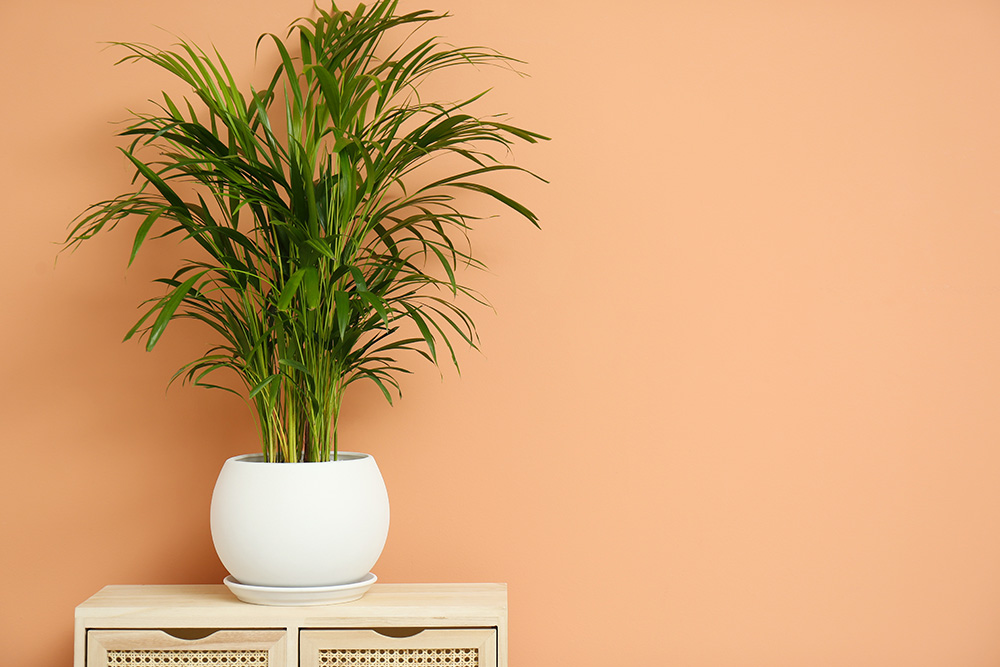
| Benefits | Plant Care |
| Removes VOCs, carbon dioxide, and carbon monoxide from the air. As a tropical plant, it also puts a lot of humidity back into the air. | Bright direct light, well-draining soil. Water when the soil feels dry with non-fluoridated water. Feed during the growing season. |
Aloe Vera (Aloe barbadensis)
Aloe vera is a succulent plant that prefers desert-like conditions.
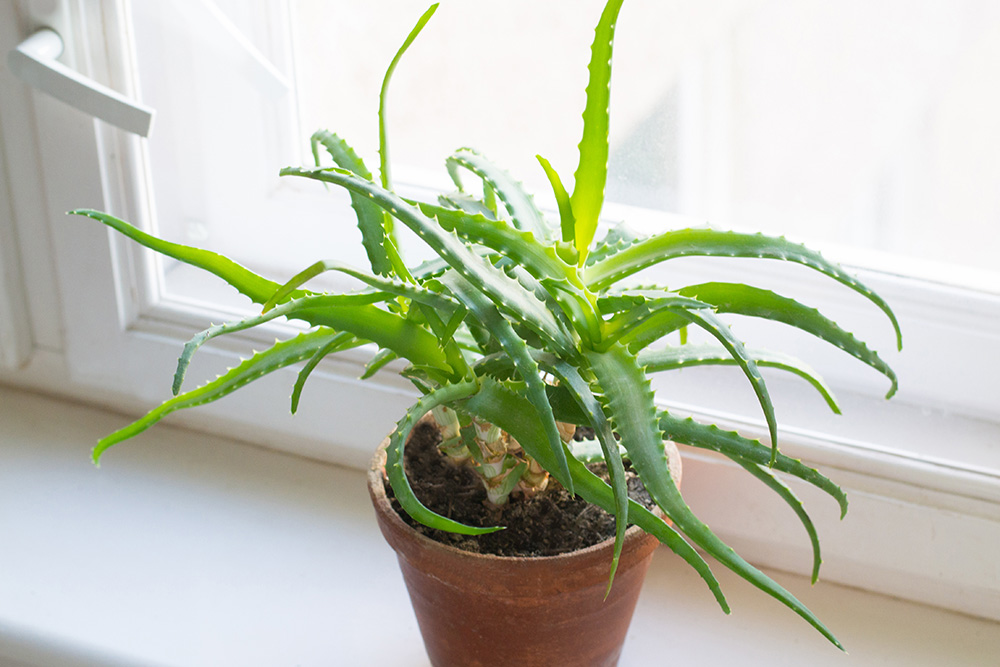
| Benefits | Plant Care |
| Removes benzene, which is commonly found in paints and household cleaning products. Aloe also continues respiration during the night, taking in carbon dioxide and producing fresh oxygen all night. | Warm, bright area. Keep in well-draining soil and only water when soil is dried out. Better to underwater than overwater. |
English Ivy (Hedera helix)
A trailing plant that is best kept out of reach of kids and pets.
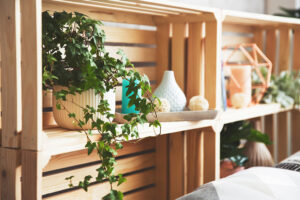
| Benefits | Plant Care |
| According to a landmark 1989 NASA study, English ivy is super effective at removing formaldehyde, xylene, benzene, ammonia, and trichloroethane. Some studies also show it can remove mold too, which can cause a whole host of health problems | Almost any light conditions. Grows quickly, so you may need to prune it. |
Heart Leaf Philodendron (Philodendron hederaceum)
An easy-to-care-for plant that can grow to 10 feet long.
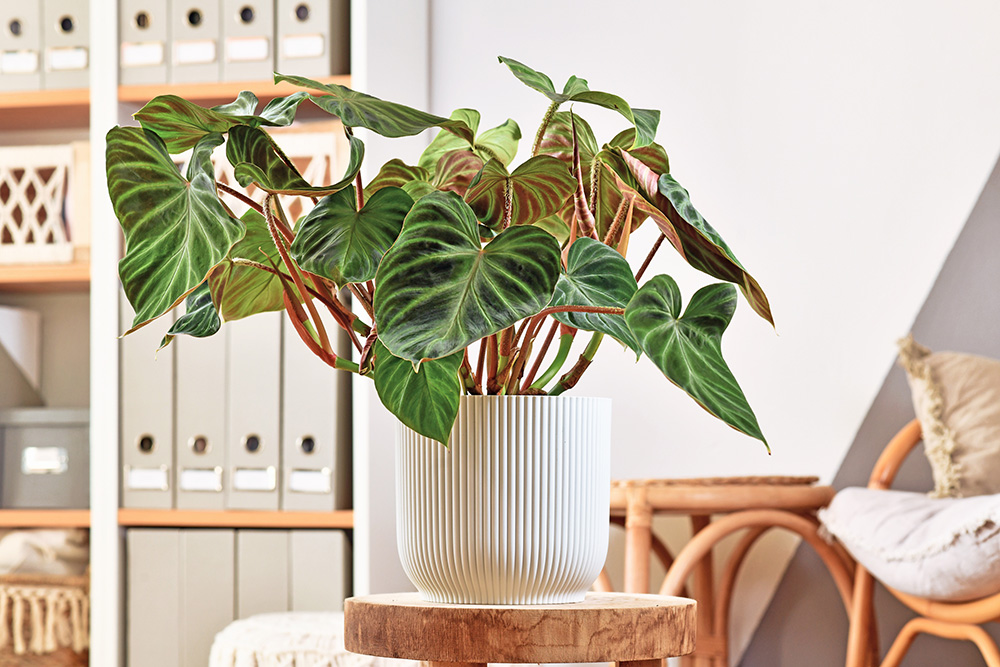
| Benefits | Plant Care |
| The NASA study found that this plant can remove ammonia, benzene, formaldehyde and trichloroethylene from indoor air. | Medium indirect light is best, but can tolerate low light. Water when soil dries out. |
Golden Pothos (Epipremnum aureum)
Golden pothos is a trailing, lush green plant that would be great in a hanging planter.
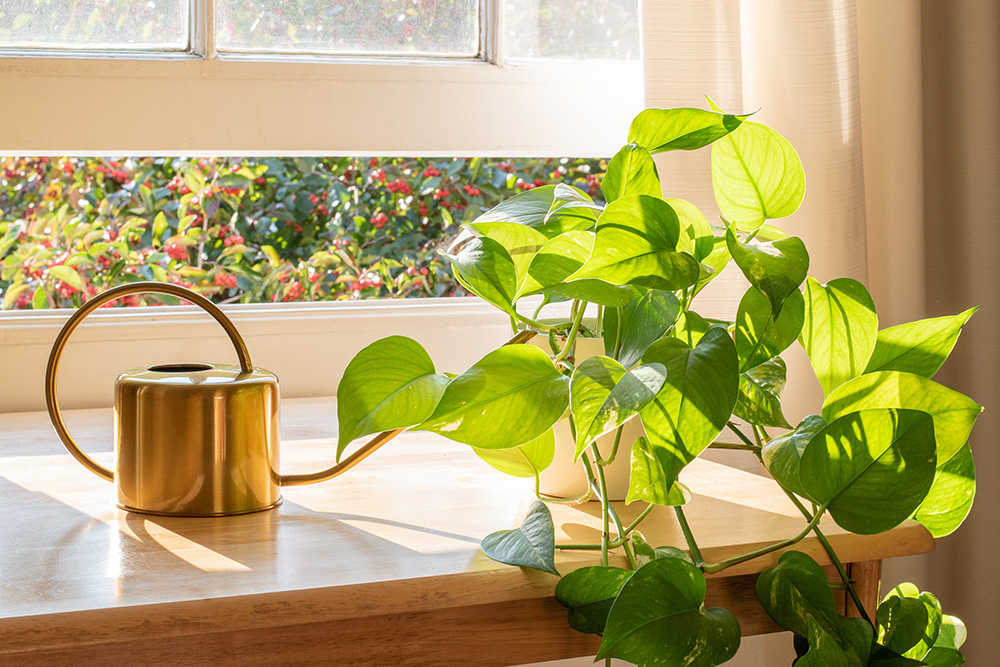
| Benefits | Plant Care |
| Easy to propagate from cuttings, so you can fill your bedroom and house with new plants. | Tolerant of almost any lighting. Water when soil feels dry. |
Lavender (Lavandula spp.)
There is a reason lavender is so popular – it works.
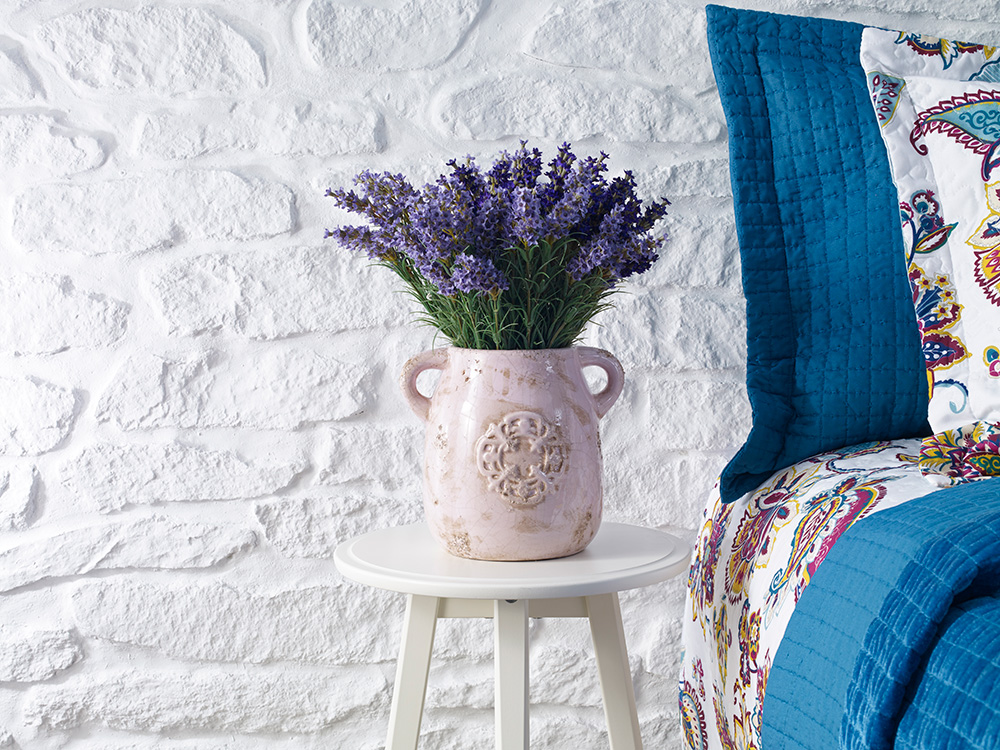
| Benefits | Plant Care |
| Studies have shown that lavender has a sedative, pain-relieving effect and also lowers heart rate and reduces anxiety. English lavender and lavandin have the strongest scent. | Bright, direct sunlight. Water frequently, and make sure soil is well-draining.Peace Lily (Spathiphyllum wallisii) |
Peace Lily (Spathiphyllum wallisii)
According to the 1989 NASA study, this plant ranks as one of the most effective air purifiers and is incredibly easy to care for.
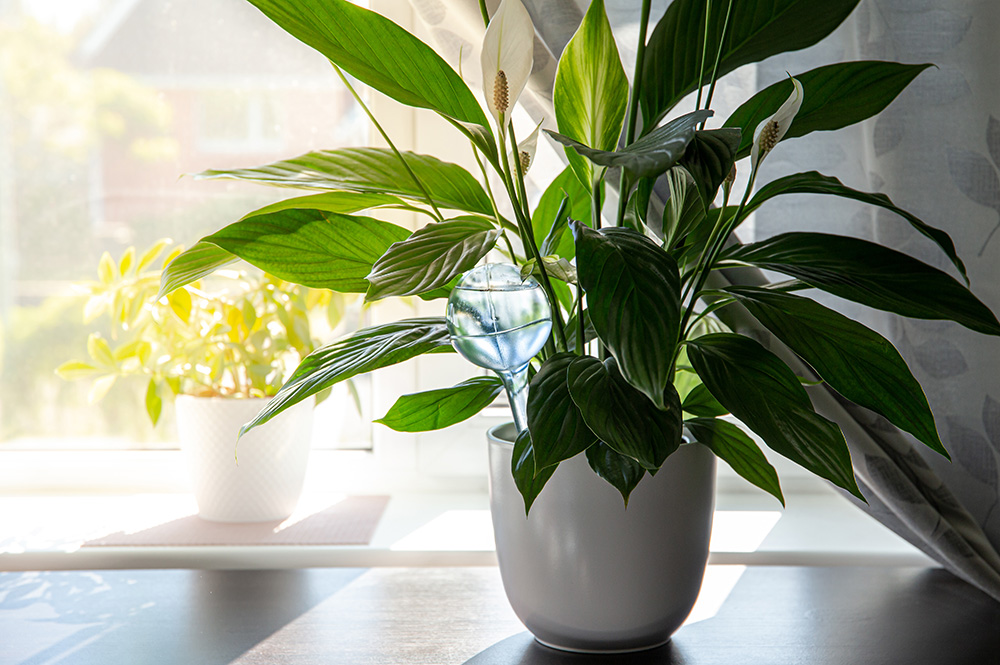
| Benefits | Plant Care |
| Removes benzene, formaldehyde, trichlorethylene, xylene, and ammonia from the air. | Needs frequent watering and low light. Native to rainforests, so think jungle-like environment. This plant will wilt if it gets too dry but will perk up once you water it. |
Rosemary (Rosemarinus officinalis)
Rosemary is a bushy Mediterranean herb with many medicinal benefits and culinary uses.
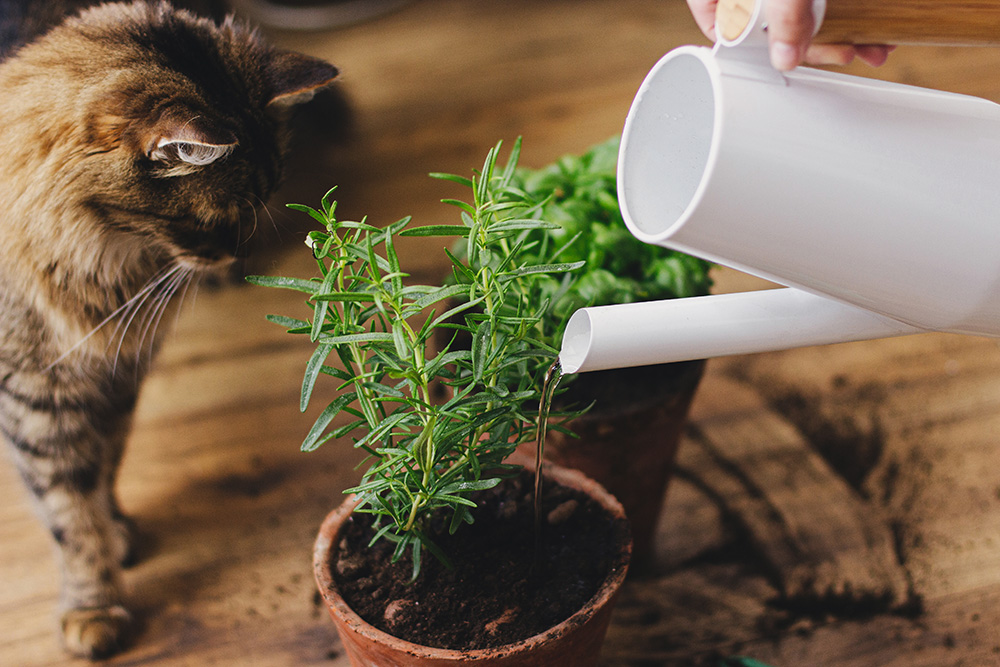
| Benefits | Plant Care |
| The therapeutic effects of consuming rosemary as food or medicine have been studied extensively, and include improving mood, learning, memory, pain, anxiety, and sleep. As a plant in your bedroom, it will help clean the air and provide a ready source of tea. | Needs well-draining soil and a drainage hole in the pot. Water regularly when the soil feels dry. Bright direct light. |
Snake Plant (Sansevieria spp.)
Snake plant is an upright, easy-to-grow plant from semi-arid parts of Africa.
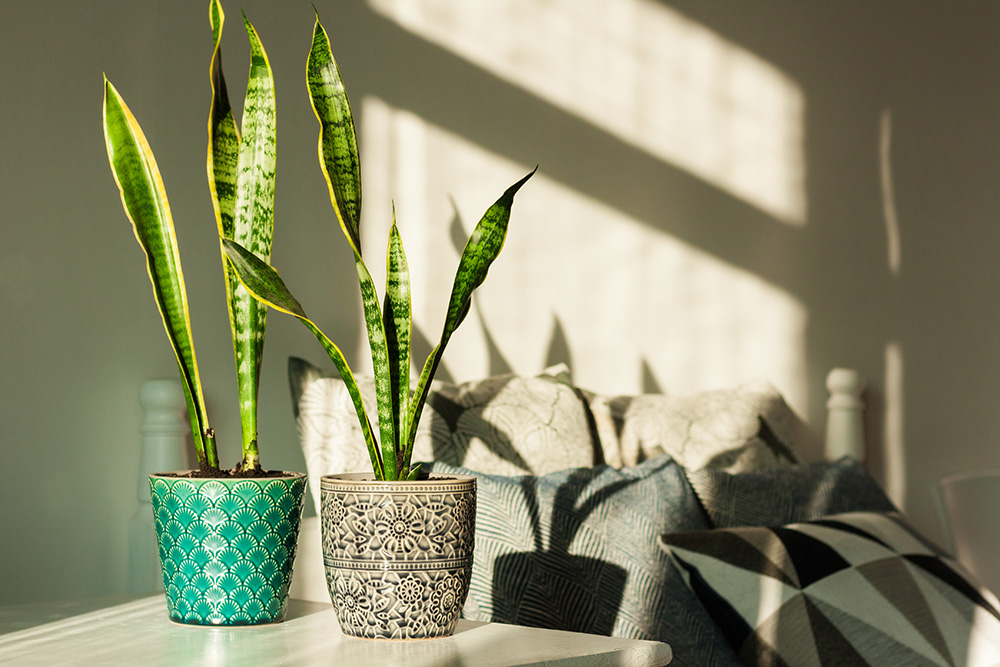
| Benefits | Plant Care |
| Like aloe, continues respiration throughout the night, supplying fresh oxygen while you sleep. A powerhouse at removing toxins from the air, it’s rated in the top 10 from the NASA study. | This is a hardy plant that can survive in low light and prefers infrequent watering (overwatering is a great way to kill this plant). The leaves tend to display more color variation, though, with more light. |
Spider Plant (Chlorophytum comosum)
Spider plants are hardy and easy to grow. They send out baby plants (the “spiders”) when they’re happy and growing, so it’s easy to fill your house with these.
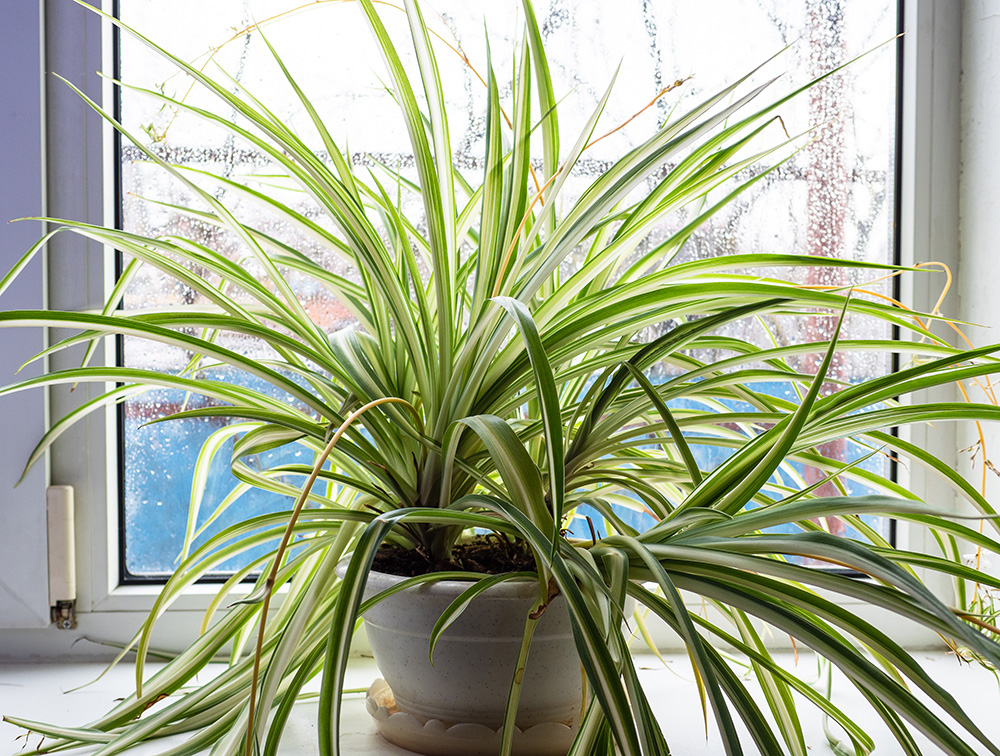
| Benefits | Plant Care |
| Effective in cleaning indoor air by absorbing chemicals including formaldehyde, xylene, benzene, and carbon monoxide. | Medium to bright light. Cool to average temperatures. Allow soil to dry slightly between watering. |
Where to Put Plants in Your Bedroom
Now the question is, “Where should I put these pretty plants?” Here are a few ideas:
Hanging Planters or Floating Shelves
Pro: Creates a clean aesthetic by reducing clutter on windowsills and the floor, which can promote relaxation. If you have kids or pets you can’t trust to keep the plants out of their mouths, it’s best to have them up high out of reach. Also great for trailing plants that need room for their bountiful leaves to cascade.
Con: If you rent, you’ll need to ask about being able to install hooks or shelves.
Consider: Make sure the hardware you use is sufficient to hold the weight of the plants you’ll put on it. You may not want to hang them above your bed in case they fall.
Best plants: Golden pothos, English ivy, heart leaf philodendron
Window Sill
Pros: Window sills are great places to put plants that need a lot of light. North-facing windows can give bright indirect light, while south and sometimes west windows can offer bright direct light
Cons: Can take up space and clutter the aesthetic.
Consider: If you have wooden window sills, make sure to have a dish under your pot to catch excess water. Plastic is best because residual moisture won’t get the wood damp and cause mold, which can happen with clay dishes.
Best plants: Aloe, lavender, rosemary, snake plant
On the Floor
Pro: Having large plants on the floor gives them ample room to spread, and they’re less likely to fall over. You could strategically place them to hide things you don’t want to see.
Con: Easier access for pets and small children. Potential tripping hazard.
Consider: Putting the plant on a caddy to make it easier to move around.
Best plants: areca palm, peace lily, rosemary
Away from Vents
Both hot and cold air blowing over your plants can dry them out, which creates more work for both you and the plant. As much as possible, try to find a space where your plants aren’t getting blown on directly.
What Plants are Safe for Cats & Dogs?
Wouldn’t it be great if all these amazing plants were also safe for cats and dogs? While some are, there are also quite a few that aren’t. To keep your furry friends safe, take a look at the lists below.
Plants that are toxic to dogs and cats include:
- Aloe vera
- English ivy
- Heartleaf philodendron
- Lavender
- Lilies
- Pothos
- Snake plant
- Cannabis
- Sago palm
- Azalea/Rhododendron
- Yew
Plants that are safe for cats & dogs include:
- African violet
- American rubber plant
- Spider plant
- Areca palm
- Bamboo
- Rosemary
- Ferns
- Orchids
- Venus fly trap
You can find more info on the Animal Poison Control website, including an extensive list of safe and toxic plants and their effects on cats and dogs.
FAQs
Still have questions? Keep reading to learn more!
Are plants in the bedroom bad for feng shui?
It’s debatable. In general, indoor plants are good for feng shui. However, having plants in the bedroom can be undesirable because of the energy they put into growth. The bedroom should be a space of calm and relaxation to promote sleep, and plants’ vigorous growth energy can counteract this.
Are plants safe in the bedroom?
This depends on your individual situation. Take into account any children or pets in the home, the size and layout of your bedroom, and any allergies you or the people you live with may have.
Why should you not put plants in your bedroom?
If you or anyone in your home has an allergy to a plant, it’s probably best to keep it out of your home, period. Some plants, like English ivy, can cause contact dermatitis. House plants can also attract pests like aphids and mealybugs, which you will need to remove, so consider how much work you’re willing to put into caring for your plants.
